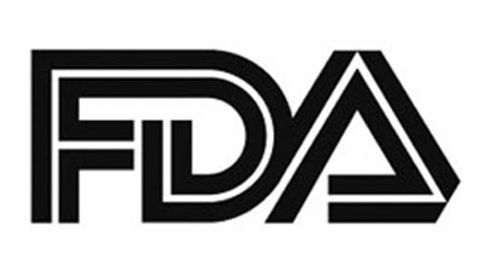FDA Lifts Partial Clinical Hold from Study of SBP-101 in Pancreatic Cancer
The FDA has lifted a partial clinical hold on a phase 1 clinical trial of SBP-101 in combination with the standard-of-care agents gemcitabine and nab-paclitaxel as treatment of patients with metastatic pancreatic ductal adenocarcinoma.

The FDA has lifted a partial clinical hold on a phase 1 clinical trial of SBP-101 (NCT0341279) in combination with the standard-of-care agents gemcitabine and nab-paclitaxel (Abraxane) as treatment of patients with metastatic pancreatic ductal adenocarcinoma (PDAC).1
In an effort to get the clinical trial reopened, the developer of SBP-101, Panbela Therapeutics, agreed to exclude patients with a history of retinopathy or who are at risk of retinal detachment from all future studies. The company also agreed to schedule ophthalmologic monitoring for all patients. Screening for retinal toxicity will also be included in future dose-finding studies.
SBP-101 is a polyamine analogue that has demonstrated signals of tumor growth inhibition in clinical trials throughout the United States and Australia. Data supporting the agent suggests that it may compliment an FDA-approved standard-of-care therapy intended for the treatment of patients with metastatic pancreatic cancer. In addition, safety data along with the Pain Management Index profile of SBP-101, as seen in the phase 1 clinical trial, warrant the drug’s continued evaluation.
Earlier in the year, Panbela announced that an independent data safety monitoring board had recommended that administration of the drug be held pending further investigation of visual disturbance toxicities in the phase 1 trial. Complaints of visual changes from participants were reported in the combination phase 1 study that were not seen in the earlier phase 1 monotherapy study.2
An estimated 24 patients will be included in the ongoing phase 1a/1b dose-escalation and expansion study of SBP-101 combined with gemcitabine and nab-paclitaxel for the treatment of patients with previously untreated metastatic PDAC. The study is exploring the recommended phase 2 dose of SBP-101. The secondary end points include safety/tolerability—as determined by the number of patients with adverse events, tumor response, area under the plasma concentration versus time curve, and peak plasma concentration.
To be eligible, patients must have histologically or cytologically confirmed metastatic PDAC that was previously untreated, measurable disease on CT or MRI scan by RECIST version 1.1 criteria; ECOG performance status 0 or 1; age ≥ 18 years; adequate bone marrow, hepatic, renal and coagulation function; a life expectancy of at least 3 months; and QTc interval ≤ 470 msec at baseline.
Original exclusion criteria for the study include severe or uncontrolled systemic disease or any concurrent condition that may interfere with treatment, as well as radical or psychiatric conditions, symptomatic central nervous system malignancy or metastasis, deep vein thrombosis, pulmonary embolism or other thromboembolic event, a known active bacterial, fungal, or viral infection requiring systemic therapy, active infection with human immunodeficiency virus, hepatitis B or C virus, or other conditions that may interfere with SBP-101 or chemotherapy.
In a prior phase 1 study (NCT02657330), SBP-101 showed promise as monotherapy in patients with metastatic PDAC.3 A total of 28 patients were enrolled and treated according to a modified 3 x 3 dose-escalation scheme. The doses of SBP-101 administered were 0.05 mg/kg in cohort 1, 0.1 mg/kg in cohort 2, 0.2 mg/kg in cohort 3, 0.4 mg/kg in cohort 4, and 0.8 mg/kg in cohort 5 given for week days for 3 weeks, followed by 5 weeks of observation. The study evaluated the maximum-tolerated dose of the agent.
Treatment with SBP-101 led to stable disease (SD) in 4 patients, 2 of whom were from cohort 3 and 2 from cohort 4. Four patents from cohort 5 also achieved SD. In cohort 3, the median survival observed was 5.9 months.
According to the safety analysis, the most common adverse events (AEs) were abdominal pain, constipation, decreased appetite, dehydration, diarrhea, fatigue, nausea and vomiting. The majority of AEs were grade 1 or 2 in severity and not likely related to the experimental drug. Notably, no patients in the study had drug-related bone marrow suppression or peripheral neuropathy on any dose of SBP-101, and there were no dose-limiting toxicities (DLTs) in cohorts 1 through 4. DLTs of bacterial sepsis with metabolic acidosis, hepatic and renal failure with elevated lipase, and superior mesenteric vein thrombosis with metabolic acidosis were observed in cohort 5 in 1 patient each.
These data showed SBP-101 to be a safe and tolerable agent for the treatment of metastatic PDAC.
SBP-101 was previously granted a fast track designation by the FDA for the treatment of patients with metastatic PDAC in combination with gemcitabine and nab-paclitaxel. At the time the fast track designation was announced, Suzanne Gagnon, MD, chief medical officer of Sun BioPharma, the name of which was later changed to Panbela, stated: “Fast Track Designation is important for Sun BioPharma because it enhances our ability to develop SBP-101 as efficiently as possible.”
References:
1. Panbela announces partial clinical hold lifted on phase i polyamine metabolic inhibitor study in pancreatic cancer. News release. Panbela Therapeutics. April 16, 2021. Accessed April 16, 2021. https://panbela.com/wp-content/uploads/2021/04/PBLA-PR-Lifted.pdf
2. Panbela Provides Update on Current Clinical Trial: Decision to Hold Administration of SBP-101. News release. Panbela Therapeutics. February 10, 2021. Accessed April 16, 2021. https://panbela.com/wp-content/uploads/2021/02/PBLA-PR-Hold.pdf
3. Tebbutt NC, Kotasek D, Borad MJ, et al. A phase 1 safety study of SBP-101, a polyamine metabolic inhibitor, for pancreatic ductal adenocarcinoma (PDA). J Clin Oncol. 2018;36(suppl 15):e16231. doi:10.1200/JCO.2018.36.15_suppl.e16231